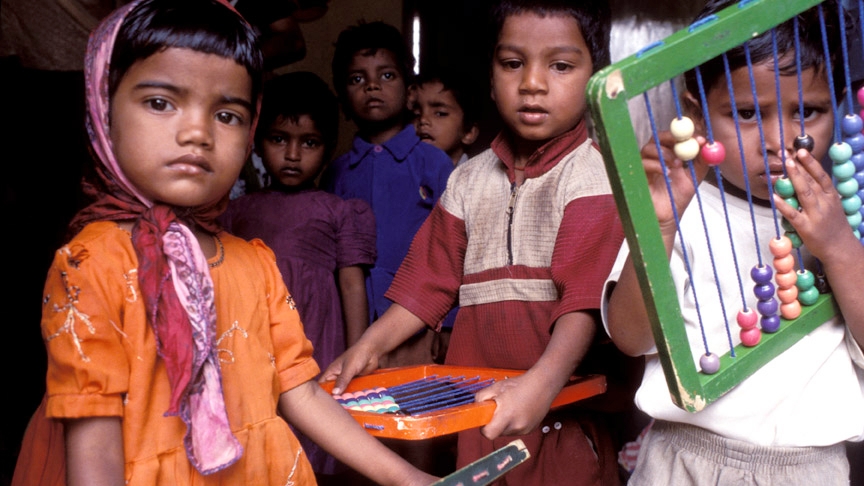Proper nutrition and stimulation are essential during the first years of life for children to develop healthy minds and bodies. While many programs address malnutrition, efforts to promote early childhood stimulation and learning have been a greater challenge because of the costs and the difficulty in reaching pregnant women and mothers of children younger than three years old. This evaluation in Bangladesh examined the impact of combining low-cost stimulation instruction with a large-scale nutritional program, adding to the growing body of evidence on how to successfully deliver programs to help children’s development.
Research area: Early Childhood Nutrition, Development, and Health
Country: Bangladesh
Evaluation Sample: 78 rural community clinics and 2574 households
Timeline: 2012-2016 (Completed)
Intervention: Nutrition, Information, Stimulation, Health
Collabortors: Marjorie Chinen, American Institutes for Research; Johannes Bos, American Institutes for Research; Najmul Hossain, Data International; Jena Derakhshani Hamadani, International Centre for Diarrhoeal Disease Research in Bangladesh; Minhaj Mahmud, BRAC Institute of Governance and Development, BRAC University
Partners: American Institutes for Research; Data International; International Centre for Diarrhoeal Disease Research in Bangladesh; BRAC Institute of Governance and Development, BRAC University; Save the Children
World Bank Task Team Lead (TTL): Shinsaku Nomura
Problem
Many of Bangladesh’s 61 million children suffer from malnutrition and lack appropriate stimulation and early learning opportunities. About two fifths of the country’s children younger than five years old have stunted growth and about a fifth of newborns have low birth weights. In addition, about half the two-year-olds in Bangladesh are well below international height standards and about a third are severely underweight.
Intervention
Bangladesh’s National Nutrition Service leads the country’s efforts to combat malnutrition. Save the Children developed a pilot program to improve children’s development, delivered through the existing nutrition service program. During routine household visits by community health workers, and during sick or well-baby visits to community clinics, mothers and other caregivers were shown how to stimulate their young children. They also received two picture books.
Evaluation design
Clustered-randomized controlled trial. A total of 78 community clinics were randomly assigned to either be in the treatment or control group. All the clinics received the national nutrition program, but the treatment group also received the special stimulation program.
Eligibility
Mothers and other caregivers in poor families with children under the age of three.
Results
Parents’ knowledge and practices of healthy development did not improve relative to the control group. However, families exposed to the pilot program were more likely to register for the existing national nutrition program. Children in these families did show modest improvements in cognitive, linguistic, socio-emotional, and physical development. However, it was not possible to know whether the changes came from the pilot program or from the national nutrition program.
Steps for policy and program design impact
As part of the evaluation, the team built an advisory group—consisting of government officials from various ministries—who met regularly throughout the process to discuss progress and later, ways to use the results going forward.
Because the intervention uses government infrastructure, it was relatively low cost and very easy to scale up. A November 2016 workshop in Dhaka, hosted by the Ministry of Education, included participants from the Ministry of Women and Children, as well as and Bangladesh’s Secretary of Health. They joined local research institutes and civil society organizations to discuss results and potential scale up.

